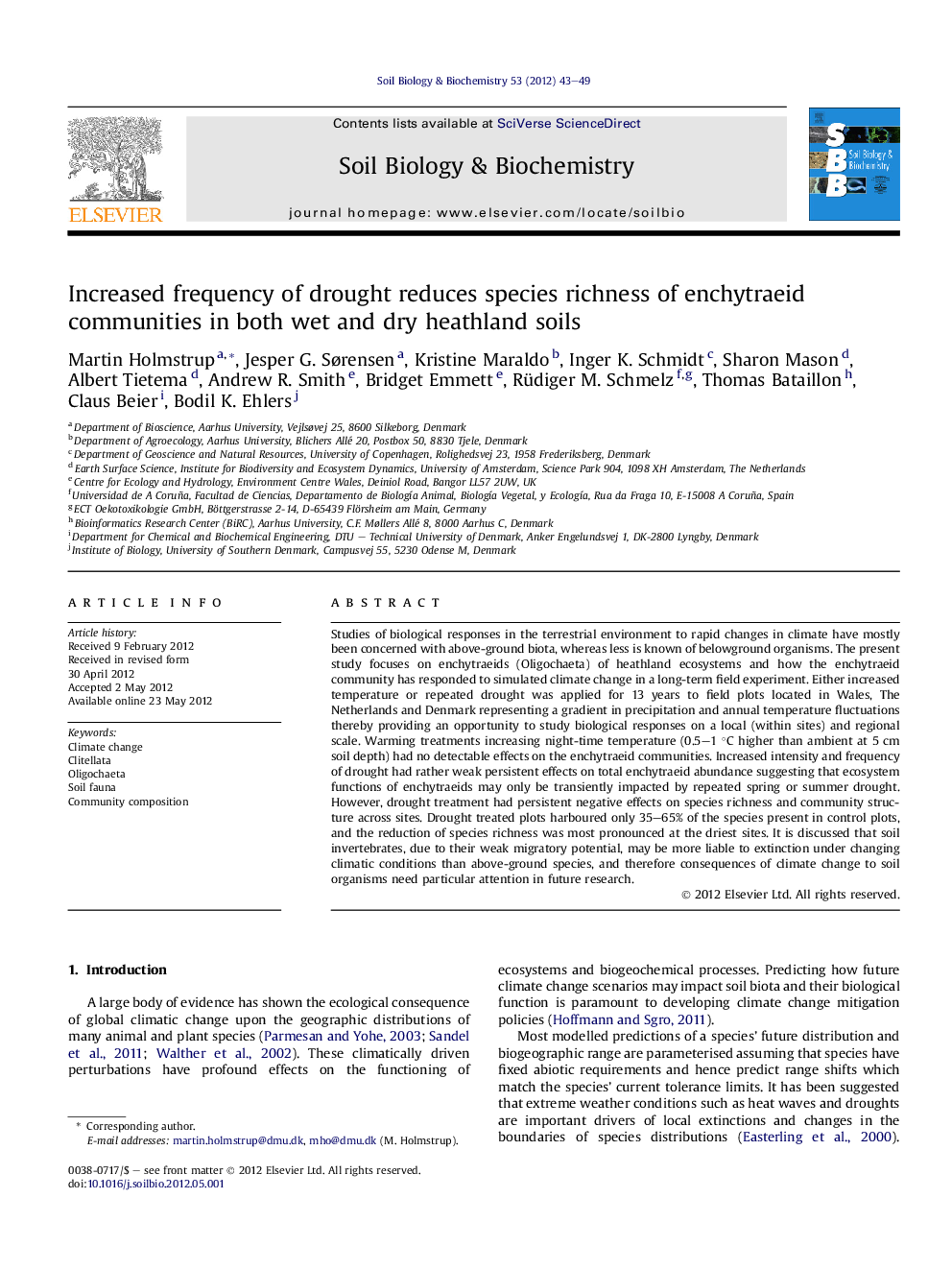| Article ID | Journal | Published Year | Pages | File Type |
|---|---|---|---|---|
| 2024911 | Soil Biology and Biochemistry | 2012 | 7 Pages |
Studies of biological responses in the terrestrial environment to rapid changes in climate have mostly been concerned with above-ground biota, whereas less is known of belowground organisms. The present study focuses on enchytraeids (Oligochaeta) of heathland ecosystems and how the enchytraeid community has responded to simulated climate change in a long-term field experiment. Either increased temperature or repeated drought was applied for 13 years to field plots located in Wales, The Netherlands and Denmark representing a gradient in precipitation and annual temperature fluctuations thereby providing an opportunity to study biological responses on a local (within sites) and regional scale. Warming treatments increasing night-time temperature (0.5–1 °C higher than ambient at 5 cm soil depth) had no detectable effects on the enchytraeid communities. Increased intensity and frequency of drought had rather weak persistent effects on total enchytraeid abundance suggesting that ecosystem functions of enchytraeids may only be transiently impacted by repeated spring or summer drought. However, drought treatment had persistent negative effects on species richness and community structure across sites. Drought treated plots harboured only 35–65% of the species present in control plots, and the reduction of species richness was most pronounced at the driest sites. It is discussed that soil invertebrates, due to their weak migratory potential, may be more liable to extinction under changing climatic conditions than above-ground species, and therefore consequences of climate change to soil organisms need particular attention in future research.
► Heathland soils were subjected to simulated climate change for 13 years. ► Night time warming did not have any detectable effects on the enchytraeid community. ► Increased drought caused a decline in species richness. ► Enchytraeid abundance was not affected after annual recovery cycles.
